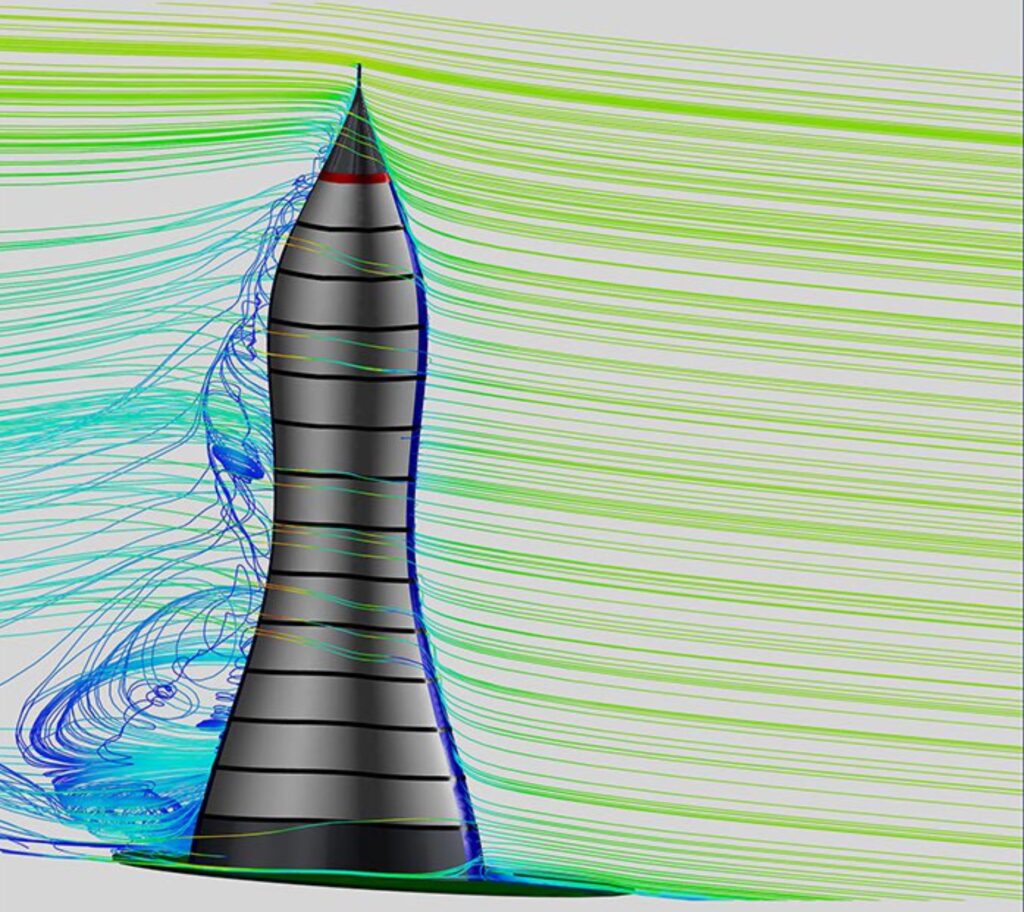When it comes to sustainable building design, emphasis on environmental impact should be considered. The sustainable building design is about ensuring the core factors such as aesthetics, occupant comfort, indoor air quality and fire safety standards. Computer Aided Engineering (CAE) emphasis more on sustainability very early in the design process. CFD adds considerable value in building design including energy efficiency and environmental impact. It also takes advantage of natural resources to significantly improve the sustainable development.
Understanding the effect of CAE in building design
CFD in early design process provides real-world validation and its impact on the design, before anything is built. Architects are able to understand the flow and thermal behaviour and helps them validate how the design changes can impact the ventilation objectives or meet Government certifications.
It enables architects to study the ventilation effectiveness early in the development stage before significant investment or resources are committed.
It gives architects and HVAC engineers to demonstrate and achieve energy efficiency for energy certifications or air quality standards before actual construction. CFD also takes into account the surrounding environment of the actual site.
It enables to meet the fire and safety standards of your building design by devising the fastest safety evacuation path and optimizing the placement of sprinklers and other equipment at appropriate locations.
It provides the tools for most cost-effective and fastest design validation process, especially when the built environment is designed for sustainability. Insights gained through simulation can help Architects to better their design through virtual prototyping.
Myths of CAE
CFD is more expensive and time consuming
Yes, CFD is more expensive and time consuming which can increase your overall design budget. Yet the insight provided by numerical simulation can make significant cost savings in overall lifecycle of the building.
During the last 5 years, with the advent of more robust software algorithm and sophisticated computing capability, CFD has become more accurate and simpler than ever before.
CFD is too difficult to understand and experts are needed to interpret the results
Yes, inorder to understand the arrived results, the person should have sound knowledge in Fluid mechanics, Thermodynamics and Numerical methods to verify whether arrived results are logically correct and the physics of the system is completely captured.
We live in this space between our clients, our Industry experts can make you understand the results and assist you through every process of the design.
Most building design do not need CFD
This myth is largely been associated with history, most architectural marvels were designed centuries before CFD came into the picture, for example – Hawa Mahal, Rajasthan is the most efficient naturally ventilated buildings in the world.
But today’s Business environment is more conducive to reliable, energy-efficient and safer built environments. We perhaps think that CFD can lead to fewer design mistakes, smoother workflows, greater engagement and usability.
CFD results cannot be trusted
Accuracy of the CFD results has been proven in every realm of Architectural design, many Government agencies have made CFD an essential and mandatory tool for validating the design before being built. But, as with anything it is upto the person performing the analysis and the physical models used to simulate it.
Conclusion
In conclusion, CFD simulation plays a crucial role in building ventilation design for sustainable and efficient building development. Graphler Technology Solution provides CFD Analysis services, Engineering Animation Services and other top-notch CAD Conversion Services, product design and related services. For further information, please get in touch with us. We are always here to help you out.


